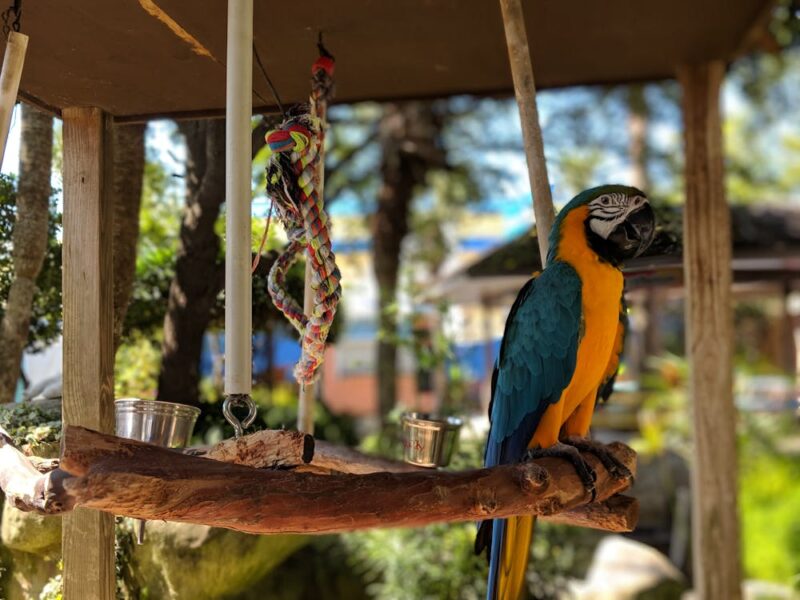Imagine transforming your dog training routine into an engaging, tech-savvy experience. AI-powered pet training videos revolutionize how we educate and communicate with our furry companions. From real-time feedback to immersive training sessions, this fusion of technology and canine companionship is here to stay.
With tools like the Companion’s Smart AI-Powered Dog Trainer, your pet can receive precise corrections and rewards without needing thumbs or arms, thanks to clever treat launchers. These systems use advanced features such as motion capture and high-definition cameras to track your dog’s movements and provide tailored guidance. It’s like having a professional trainer at home, making the process affordable and accessible.
Incorporating AI into dog training enhances education and enriches your pet’s daily life. Imagine the joy of seeing your dog successfully navigate a training session with interactive feedback, all through the power of AI. Dive into this new wave of pet training and discover how these innovative tools can make training a fun, efficient, and bonding experience for you and your dog.

The quality and sources of training data are crucial when training AI to recognize and analyze pet videos. The right data can significantly impact your model’s accuracy and efficiency.
Quality data forms the backbone of any successful AI model. When working with pet videos, it’s essential to ensure that the training data includes a diverse range of pets, scenarios, and environments.
For instance, training a model only on videos of cats in living rooms would likely result in a model that struggles to recognize outdoor scenes or identify dogs. To avoid this, your data should be well-annotated and cover various angles, lighting conditions, and pet activities. Annotated data helps models to learn better and predict more accurately.
Also, data with low resolution or poor quality should be avoided, which can lead to suboptimal model performance. The goal is to feed the algorithm with well-rounded and varied examples that provide a representative sample of real-world scenarios.
Acquiring the right data sources involves a blend of creativity and technical know-how. User-generated content is a goldmine for pet videos. Websites like YouTube or social media platforms like Instagram and TikTok have vast repositories of pet videos. Considering the platform’s terms and policies, you can legally obtain these videos by scraping public data.
Another great resource is specialized datasets available through academic and industry collaborations. Repositories like ImageNet or COCO offer significant quantities of annotated images and videos. Consider collaborating with pet-focused organizations or communities for exclusive content.
Furthermore, don’t overlook the possibility of creating synthetic data. This involves using AI to generate video clips simulating various pet behaviors and scenes. Although less authentic, synthetic data can greatly supplement real-world datasets and fill in gaps.
Remember, the more diverse and high-quality your data, the better your AI will interpret the delightful world of pet videos.
See Related: Make Money in Your Neighborhood: Jobs to Do for Money

The growing demand for engaging pet videos has opened up opportunities for pet owners to make money by sharing clips of their furry friends online. Let’s dive into some profitable platforms and what you need to know.
Several platforms offer monetization options for pet videos. YouTube and TikTok are highly popular and allow ad revenue through their partner programs. On YouTube, pet channels can attract thousands of subscribers, leading to lucrative sponsorship deals. TikTok’s short-form content is ideal for funny and cute pet clips that can rapidly go viral.
Instagram and Facebook are also great platforms. Sponsored posts, stories, and IGTV videos can bring in cash, especially if your pet has a sizable following. Specialist platforms like PetTube and The Dodo often feature pet videos and could offer monetary compensation.
Understanding each platform’s requirements is crucial for success. For YouTube, your channel needs at least 1,000 subscribers and 4,000 watch hours in the past year to qualify for monetization. High-quality, engaging content is essential to keep viewers coming back.
Instagram pays for views and engagements, so regular posting and interacting with your audience can boost earnings. Authenticity matters—audiences respond well to genuine moments rather than staged scenarios.
On TikTok, consistently posting and using trending sounds or challenges can increase your reach. It’s also advisable to check each platform’s terms of service and community guidelines to avoid issues like copyright strikes or bans.
Integrate popular hashtags like #catsofinstagram or #dogsoftiktok to reach wider audiences. Engage with the pet community by commenting on popular videos and collaborating with other pet influencers.
By meeting these requirements and guidelines, you can maximize your pet video’s earnings while ensuring a fun and engaging experience for your audience.

Creating engaging pet content requires thoughtful planning, equipment, and effective templates. Let’s examine these key areas to help you produce captivating pet videos.
To capture and keep your audience’s attention, focus on movement and emotion. Pets naturally have playful behaviors that draw viewers in. Use brief, attention-grabbing segments showing pets in action. Capture key moments like a dog fetching a ball or a cat chasing a toy. Share your own stories and experiences to add a personal touch.
Like questions or calls to action, interactive elements can also enhance engagement. Ask viewers to share their pets’ funny moments or favorite tricks in the comments. Use eye-catching thumbnails and compelling titles to draw people in. Authenticity and relatability are your best tools here.
A good video starts with the right equipment. You don’t need professional gear; many viral pet videos are recorded on smartphones. Ensure your camera can handle fast movements without blurring. Using natural light will improve the quality of your footage significantly.
Editing is where your videos come to life. Cut out any dull moments and focus on the highlights. Add interesting effects and transitions to maintain visual interest. Use captions to make your videos accessible to a wider audience. Don’t forget to include background music that complements the video’s playful or emotional mood.
Templates can save you a lot of time and effort. Many AI-powered platforms offer pre-designed templates tailored for pet videos. These templates often come with pre-set animations, transitions, and text overlays that can make your content look professional with minimal effort.
Choose a template that matches the tone of your video. For instance, a fun, playful template for a dog playing fetch or a cozy, calm background for a cat lounging. PetDesign, an AI-powered suite, offers various fine-tuned templates that can be a great start. Customizing these templates with footage and text prompts can produce a polished final product that resonates with your audience.
See Related: Unlock the Power of AI: Turn ChatGPT into Your Cash Machine

Leveraging multiple platforms can significantly boost your earnings in the pet videos AI training niche, enabling you to tap into diverse revenue streams and reach broader audiences.
Utilizing various social media channels like YouTube, Instagram, and TikTok is essential. Each platform has its unique audience and engagement style. Cross-promotion involves sharing your AI training videos across these channels and encouraging your followers on one platform to follow you on others.
For instance, share snippets of your YouTube content on Instagram Stories, urging followers to watch the full video. Using influencers within the pet industry can amplify your reach. Influencers already bond with their audience; a genuine endorsement can drive traffic to your content.
Diversifying income sources is crucial. Ad revenue from YouTube is a given, but think beyond it. Subscription-based models on platforms like Patreon can offer exclusive AI training tips, behind-the-scenes content, and one-on-one coaching sessions for a monthly fee.
Affiliate marketing is another lucrative option. Partner with pet product companies and promote their products naturally and usefully to your audience in your videos. Moreover, selling downloadable resources, like e-books or training guides, can add a steady income stream.
See Related: Little-Known Ways to Make Money Online

Artificial intelligence advancements are transforming the landscape of pet video creation and training. From promoting sustainable practices to identifying emerging trends in pet content, AI’s long-term impact is profound.
Incorporating AI into pet video production supports sustainability. For instance, Colorado State University researchers use machine learning to optimize resource use, reducing unnecessary energy consumption.
By leveraging AI, you can automate various aspects of video creation, from editing to uploading. This saves time and minimizes the need for multiple takes, which means less stress on pets. An automated treat dispenser can reward pets without your constant supervision, creating a more efficient training cycle.
AI also helps monitor the well-being of pets during training. Data-driven insights ensure that your furry friends are not overworked, promoting a healthier and more sustainable environment for them.
Future trends in AI-driven pet content are promising. Companion’s use of computer vision is a game-changer. Imagine an AI coach who can analyze your pet’s behavior in real-time and provide instant feedback, enhancing training effectiveness.
Machine learning can predict the types of content that are likely to go viral. This means you can tailor your videos to fit popular trends, ensuring they gain traction. AI algorithms can even help create personalized content for individual pets, making your videos more engaging and unique.
Another exciting trend is the integration of AI with interactive pet content. Think about virtual reality environments where your pet can train, explore, and play. These advancements promise to elevate pet training and video content creation.
Last updated: July 5, 2024